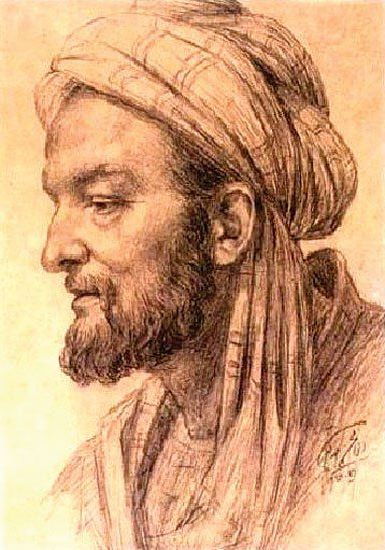
Ibn Sina, “The Psychiatrist of the world”
Join the conversation and keep in touch!
Ibn Sina [Avicenna]
Abū-ʿAlī al-Ḥusayn ibn-ʿAbdallāh Ibn-Sīnā [Avicenna] (ca. 970–1037) was the preeminent philosopher and physician of the Islamic world.[1] In his work he combined the disparate strands of philosophical/scientific[2] thinking in Greek late antiquity and early Islam into a rationally rigorous and self-consistent scientific system that encompassed and explained all reality, including the tenets of revealed religion and its theological and mystical elaborations. In its integral and comprehensive articulation of science and philosophy, it represents the culmination of the Hellenic tradition, defunct in Greek after the sixth century, reborn in Arabic in the 9th (Gutas 2004a, 2010). It dominated intellectual life in the Islamic world for centuries to come, and the sundry reactions to it, ranging from acceptance to revision to refutation and to substitution with paraphilosophical constructs, determined developments in philosophy, science, religion, theology, and mysticism. In Latin translation, beginning with the 12th century, Avicenna’s philosophy influenced mightily the medieval and Renaissance philosophers and scholars, just as the Latin translation of his medical Canon (GMed 1), often revised, formed the basis of medical instruction in European universities until the 17th century. The Arabophone Jewish and Christian scholars within Islam, to the extent that they were writing for their respective communities and not as members of the Islamic commonwealth, accepted most of his ideas (notably Maimonides in his Arabic Guide of the Perplexed and Barhebraeus in his Syriac Cream of Wisdom). The Jewish communities in Europe used Hebrew translations of some of his works, though they were far less receptive than their Roman Catholic counterparts, preferring Averroes instead. The Roman Orthodox in Constantinople were quite indifferent to philosophical developments abroad (and inimical to those at home) and came to know Avicenna’s name only through its occurrence in the Greek translations of the Latin scholastics that began after the 4th Crusade. In his influence on the intellectual history of the world in the West (of India), he is second only to Aristotle, as it was intuitively acknowledged in the Islamic world where he is called “The Preeminent Master” (al-shaykh al-raʾīs), after Aristotle, whom Avicenna called “The First Teacher”
By: Stanford Encyclopedia of Philosophy — [Read full article here!]


ابن سینا پدر روانشناسی
معرفت شناسی ابن سینا مبتنی بر نظریه روح است که مستقل از بدن و قادر به انتزاع است. این نشان دهنده پایگاه ارسطویی و ساختار نئوپلتونیک روانشناسی او است. این استدلال به۸ اصطلاح در ابتدای «فی ناف / THE ANIME (رساله روح)» است. در توضیح این نظریه که به تئوری «مرد پرنده» شهرت دارد این سوال مطرح می شود که اگر شخصی در یک وضعیت مناسب قرار داشت، اما کور و در هوا معلق بود، قادر به درک هر چیزی از طریق حواس خود ه۹ست؟ آیا می تواند وجود خود را تایید کند؟
او در چنین وضعیتی متوقف شده است. او نمی تواند وجود بدنش را تایید کند، زیرا او به صورت تجربی از آن آگاه نیست، بنابراین این استدلال می تواند به عنوان استقلال روح از بدن و یک نوع دوگانگی تایید شود اما در این حالت او نمی تواند شک داشته باشد که خود او وجود دارد زیرا حتما موضوعی وجود دارد که او به آن فکر می کند؛ فلذا این استدلال همچنین می تواند به عنوان تایید خودآگاهی روح و اعتبار آن باشد. این بحث، اعتراضی را مطرح می کند که می تواند فلسفه دکارت هم تلقی شود: چگونه می دانیم که موضوع شناختنی؛ خود است؟
این عقل منطقی دارای استعدادها یا حواس در یک نظریه است که با ارسطو آغاز می شود و از طریق نئوپلتونیسم توسعه می یابد. معنای اول عقل سلیم (الحس المشترک) است که اطلاعات را از حواس فیزیکی به یک شیء معرفتی می برد. معنای دوم تصورات (الخیال) است که تصویر ذهنی معرفتی را پردازش می کند. معنای سوم استاد علمی تخیلی (المتخیلات) است که تصاویر را در حافظه ترکیب کرده، آنها را جدا می کند و تصاویر جدیدی به وجود می آورد.
حس چهارم برآورد یا تحقق (وهم) است که تصویر درک شده را به معنای آن ترجمه می کند. مثال کلاسیک برای این حس نوآورانه، درک گوسفند از وجود موقعیت گرگ و احساس خطر مبهم است. حس پنجم و نهایی این است که ایده هایی که تولید می شوند، خیره و تجزیه و تحلیل می شوند و معانی مرتبط با تولید دانش آموزان تخیلی و برآورد می شوند.
منبع: هفته نامه صدا
